- Priya tells how supporting traditional Indian pottery can bring good health, happiness, and wealth to families during Diwali.
Pottery is one of the oldest human inventions and perhaps as old as humankind. It evolved with the evolution of civilization to farming. Agriculture has an incredibly special place in India and defines the country’s profound culture and thought. As Indians learned to grow food, they also needed to store food. This gave birth to the passion and art of pottery.
India
has a proud history of fine pottery. Archaeologists have excavated clay utensils
from many ancient historical sites in India.
Pottery
is a difficult job that involves multiple steps such as sourcing, molding on potter’s
wheel, drying and firing. Potters are devoted to this art and have been passing
their expertise to their next generations. It is more of a passion rather than
merely a source of livelihood for them.
Unfortunately,
with the advancement of technology, pottery has taken a backseat in our lives.
Plastic made goods have taken over handmade items. Refrigerators have taken
over surahis and matkas, children’s toys are totally plastic made, one
will hardly find gullaks today. The Chinese market is taking over the
Indian market and pottery is not left untouched by its adversities as it is
seeing its downfall. Because of this, the potters are forced to leave their
family occupation and move to cities as migrant laborers. They do not want
their children to take up pottery as a means of livelihood since the hardships
are greater than the returns today. A potter is not able to earn a decent
livelihood today. If we do not take action, this ancient form of art may die a
slow death over the next couple of generations.
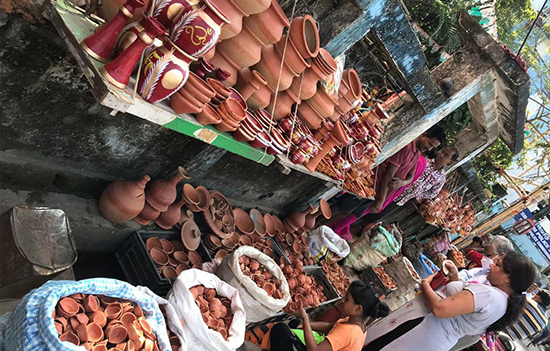 Potteries including Diyas for Sale in Siliguri. Pic by author.
Potteries including Diyas for Sale in Siliguri. Pic by author.
So,
what is being done, and is there a way we can also contribute to protecting
this age-old form of art? Thankfully, there are people who have realized the
health benefits of using clay utensils and vessels for storing and cooking
food. They encourage others to buy clay utensils. Nutrients in the soil go into
the body when we consume food cooked in traditionally made clay utensils. Traditional
potters of India use a specific type of soil for making a certain type of
utensil. This is a science that we need to appreciate more and prevent it from
getting lost.
Diwali
also reminds us of the importance and beauty of pottery even today. Hindus
light oil lamps made of clay, diyas, on Diwali. Oil lamps were an
integral part of mankind until the electric lights came. The earliest known oil
lamp can be dated back to 4500 to 3300 BC. This oil lamp is not simply about
light but about creating an ambience of energy, positivity, and receptivity. Vegetable
oils used on Diwali exude positivity. Fire is a source of light and life. The
Sun is also nothing but Fire.
Lighting
a Diya also cleanses the fire element of our body, which is made of the Panch
Mahabhutas or the five elements: fire, water, earth, air and space. This
cleaning is known as Bhuta Shuddhi in the system of Yoga. Therefore,
Hindus worship the light of the lamp on Diwali as reflected in the following
Sanskrit Sholka.
Shubham Karoti Kalyanam-Arogyam Dhana-Sampada
Shatru-Buddhi-Vinashaya Dipa-Jyotir-Namostute
Meaning:
we bow down to the light of the lamp which brings auspiciousness, health,
prosperity and dispels inimical feelings.
So, the solution is very simple: “Go Local, Support Kumhaars/Potters”.
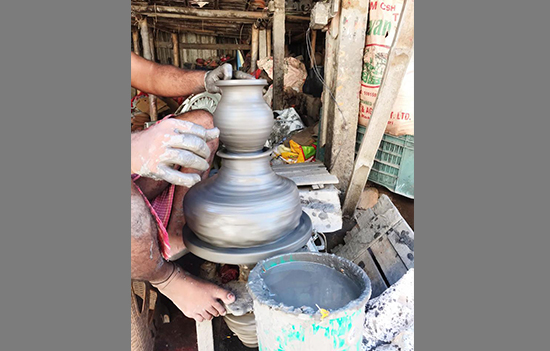 Pottery being made. Pic by author.
Pottery being made. Pic by author.
This
Diwali buy murtis and diyas from local potters and try not to get
dazzled by the shiny imported items wrapped in stifling plastic. Buy diyas
and paint them at home. Choose to buy from potters so they too have a
prosperous Diwali. Also, we should try eating and cooking in utensils made by
potters at least once a week. Like all of us, this pandemic has affected them
as well. This is the least we can do to save this age-old art and support our
traditional businesses. We may not like to buy expensive paintings, but pottery
is a form of art that we can easily afford.
Let
us support this art of heart and mind. Let us show compassion and understand
the importance of pottery. “A potter is one of the few people left who uses his
natural faculties of heart, head and hand in balance - the whole man,” Bernard
Leach.
Author Priya is a CA, CPA, Publisher and Children’s Book
Author, Founder of Eternal Tree Books LLC, East Brunswick, NJ, USA. Site is
www.eternaltreebooks.com
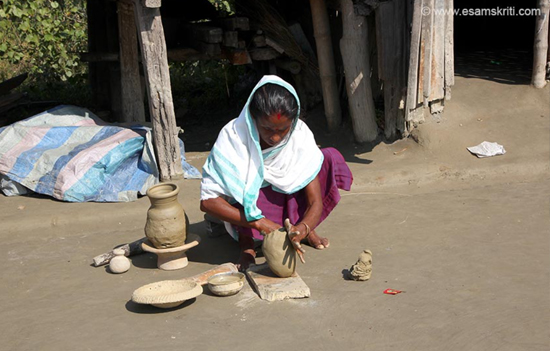 Hand-made poterry, Majuli Island Assam.
Hand-made poterry, Majuli Island Assam.
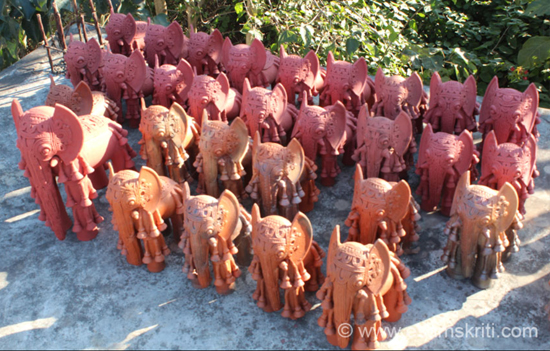 Terracota items, Kondegaon Bastar, Chhatisgarh.
Terracota items, Kondegaon Bastar, Chhatisgarh.
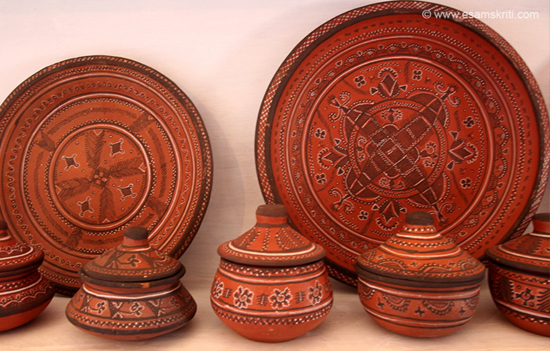 Pottery Kutch
Pottery Kutch
Also see
1.
Handmade
pottery Majuli Assam
2.
Making of
Terractoa Bastar
3.
Pottery
Products Kutch